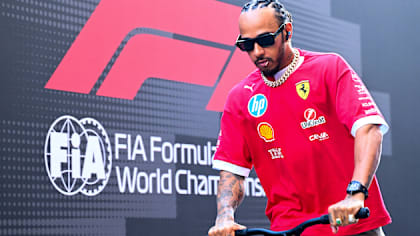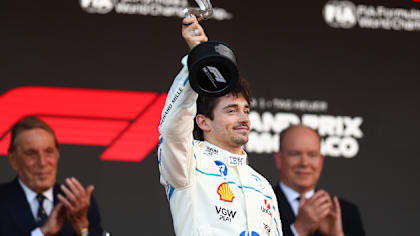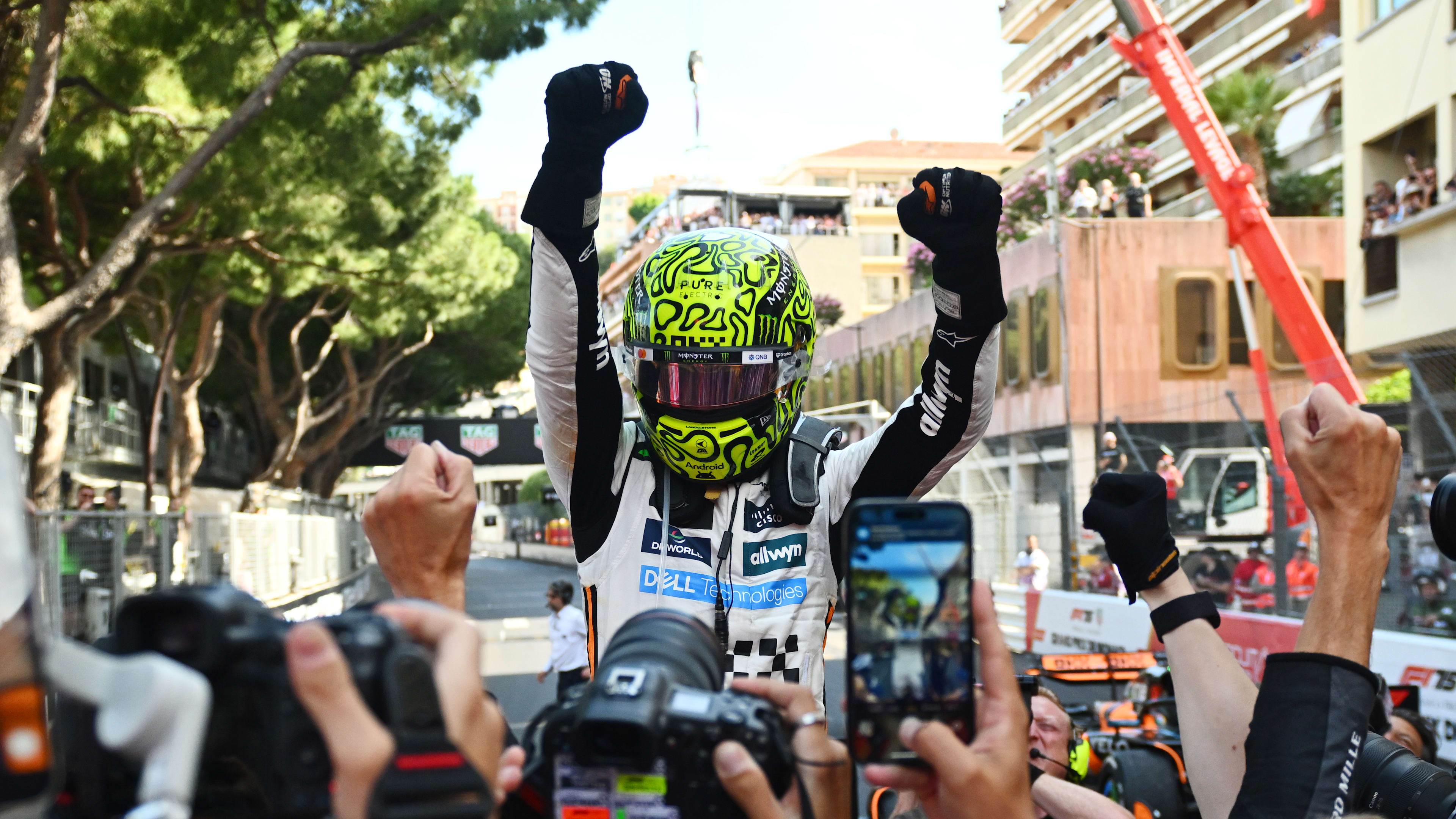In our series exploring the history of Grands Prix through selected iconic images, we turn our attention to Belgium and one of the most celebrated races on the calendar.
This look back through the archives takes in the first victory for the McLaren marque, Michael Schumacher’s awesome debut, a surprise win for Jordan, arguably the greatest overtake in history, and more…
Ascari follows in father’s footsteps, Spa-Francorchamps, 1952
Graham and Damon Hill, Gilles and Jacques Villeneuve, Keke and Nico Rosberg - F1 racing has a rich history of race-winning fathers and sons. Alberto Ascari doesn’t belong to that list, but only by virtue of the fact that there was no such thing as a Formula One world championship when his father Antonio was dominating pre-war Grand Prix racing. Ascari senior won the inaugural Grande Epreuve at Spa in 1925 driving an Alfa Romeo - a feat Ascari junior repeated in 1952 for Ferrari. The Italian, pictured here heading the field through Eau Rouge at the start, led all but one lap of the race.
(© LAT Photographic)
Brilliant Clark ‘rains’ supreme in Belgium, Spa-Francorchamps, 1963
The combination of Jim Clark and the Lotus 25 was nigh on unbeatable in 1963 - whatever the weather. Gearbox problems confined the Scot to eighth place on the grid at Spa, but a lightning start in damp conditions catapulted him into the lead before the field had even reached Eau Rouge. BRM’s Graham Hill was the only man who could live with Clark as the Lotus driver stretched his legs at the head of the race, but the debonair Englishman would run into gearbox problems shortly after a rainstorm of biblical proportions hit the track. As you can see in this picture, conditions were atrocious, yet Clark - who’d won his maiden world championship race at the same venue a year earlier - consolidated his advantage, eventually coming home an incredible four minutes and 54 seconds ahead of Bruce McLaren’s Cooper.
(© LAT Photographic)
McLaren opens his team’s account, Spa-Francorchamps, 1968
Bruce McLaren hadn’t won a world championship race for nigh on six years heading into the 1968 Belgian Grand Prix - and he didn’t think he’d won after it either. The New Zealander had been boxed in at the start and spent the majority of his afternoon busily working his self-built, bright orange M7A back towards the front of the field. At the flag McLaren thought he’d taken second, but unbeknownst to him race leader Jackie Stewart had been forced to make a last-gasp fuel stop, dropping him to fourth. “I crossed the finishing line, gave a bit of a wave at the chequered flag, braked hard, pulled in behind the pits and tried to drive the car back up our transporter,” said McLaren, “[but] there were so many people milling about at the back of the pits that I had to stop the car and climb out.” It was at this point that the modest Kiwi was told of his achievement - he’d become only the second driver (after his mentor Jack Brabham) to win in a Grand Prix in a car carrying his own name. McLaren (centre) was joined on the podium by second-place finisher Pedro Rodriguez (left, wearing his trademark deerstalker hat) and third-placed Jacky Ickx (right).
(© Sutton Images)
Nilsson guns for victory, Zolder, 1977
The 1977 Belgian Grand Prix was one of ten races between 1973 and 1984 to be held away from Spa at the considerably less spectacular Zolder circuit. A bumper entry of 32 cars had a stab at trying to claim one of the 27 grid slots, with pole position eventually going to Lotus’s Mario Andretti. But, in a remarkable wet-dry race that featured five different leaders, it was Gunnar Nilsson in the other black and gold car who would steal the show. The super-smooth Swede pressed on as the likes of Andretti, Jochen Mass and Carlos Reutemann (whose Ferrari is following Nilsson’s Lotus in this picture) were caught out by the slippery conditions, and ultimately he was rewarded when Niki Lauda spun his Ferrari out of the lead on lap 50. Nilsson, who drove flawlessly all afternoon, went on to take his only Grand Prix victory by 14 seconds.
(© LAT Photographic)
Dominant Senna takes win two of five in Belgium, Spa-Francorchamps, 1988
Ayton Senna may have been the ‘Master of Monaco’, but he was also the ‘Ace of the Ardennes’. The great man took five victories at Spa, including four in a row between 1988 and 1991, and was even allowed to keep the historic ‘Coupe de SM Leopold III’ trophy, such was his domination of the event. Rather aptly, this photo taken during the ‘88 race shows Senna out on his own, accelerating down the hill from the hairpin at La Source towards the incomparable Eau Rouge corner. Armed with the unbeatable McLaren-Honda MP4-4, Senna’s only real threat in this Grand Prix came from team mate Alain Prost, but despite getting his nose ahead at the start ‘The Professor’ had no answer for the Brazilian’s uncompromising speed. He’d eventually cross the line some 30 seconds behind Senna.
(© Sutton Images)
Sensational Schumacher dazzles on Grand Prix debut, Spa-Francorchamps, 1991
To say Michael Schumacher made quite an impression on his F1 debut at Spa in 1991 would be an understatement. The German youngster, who’d been racing in world sportscars, only set foot in an F1 car on the Tuesday before the Belgian race and, having never driven at Spa, was forced to learn the track on bicycle. But when he eventually took to the circuit in Jordan’s perfectly poised 191, Schumacher looked anything but a rookie. In Friday’s first qualifying session the 22-year-old finished nearly a second faster than Jordan’s regular driver Andrea de Cesaris. Schumacher would eventually qualify seventh, but sadly his race then lasted barely 500m before his clutch failed. The result, to all intents and purposes, was irrelevant - Schumacher had proved his quality and in a matter of days he was signed up by Benetton. Twelve months on, at the same circuit, he’d be a Grand Prix winner…
(© LAT Photographic)
Hill leads Jordan to surprise one-two, Spa-Francorchamps, 1998
The 1998 Belgian Grand Prix must surely rank as one of the most eventful and unpredictable races of all time. It began with an explosive 13-car first-lap pile-up which was triggered when David Coulthard lost control of his McLaren in appallingly wet conditions. The Scot, fortunate to be able to take the re-start in a spare car, was later involved in the race’s other defining moment when his lapped MP4-13 was struck from behind by the Ferrari of runaway race leader Michael Schumacher. As the furious German limped into retirement, minus his right-front wheel, Jordan’s Damon Hill (pictured left) swept into the lead, followed closely by team mate Ralf Schumacher (right). With a famous maiden victory in sight - but the rain still falling heavily - team boss Eddie Jordan (centre, holding trophy) ordered his drivers to hold station and the duo duly tiptoed around the remaining laps to record a famous one-two. Coulthard, meanwhile, had to pit for extensive repairs and was eventually classified seventh, five laps down.
(© Sutton Images)
Hakkinen completes epic 321km/h pass on Schumacher, Spa-Francorchamps, 2000
Breathtaking. Spinetingling. Exhilarating. Many words have been used to describe Mika Hakkinen’s gutsy 321km/h race-winning pass on Michael Schumacher at Spa in 2000, but somehow none of them does justice to what was a truly sensational slice of F1 action. The move actually began the lap before this image was taken when Hakkinen, recovering from a spin, closed in on the Ferrari of title rival Schumacher. The flying Finn attempted a lunge down the inside of the German at the end of the super-fast Kemmel Straight, but was rebuffed in the strongest possible way by Schumacher who edged the McLaren towards the grass. Undaunted, Hakkinen bided his time and as the duo raced out of Eau Rouge on the next lap, he set himself up for another overtaking attempt. There was just one problem - Ricardo Zonta’s lapped BAR (white car, centre) was honing quickly into view and taking up valuable space on the race track. Schumacher (red car, right of the picture) tucked briefly into Zonta’s slipstream before moving left and passing the BAR, but Hakkinen (far left) - travelling at enormous speed - made the split-second decision to jink boldly to the right. In one fell swoop he’d passed both cars and, having judged his braking to perfection into Les Combes, was now well on course for his fourth win of the season. The best overtaking manoeuvre in F1 history? Quite possibly.
(© Formula One World Championship Limited)
Raikkonen charges to the front - in just 12 laps, Spa-Francorchamps, 2004
Spa has always been a happy hunting ground for Kimi Raikkonen - the Finn has won four times at the classic Ardennes venue - but arguably his finest victory was his first in 2004. The McLaren driver arrived at the race, round 14 of 18 on that year’s calendar, having failed to register even a single podium finish in a season in which BAR, Renault and Williams had been the closest challengers to the dominant Ferrari squad. Things seemed unlikely to get any better when Raikkonen could only manage 10th on the grid in Belgium, but after a flying start - and some wheel-banging with Sauber’s Felipe Massa at La Source - he’d moved up to fifth before the safety car was deployed to clear up a first-lap accident. When the race resumed Raikkonen continued his charge, picking off Michael Schumacher and team mate David Coulthard to move up to third, inheriting second when Jarno Trulli pitted, and then taking the lead on the road when the other Renault of Fernando Alonso went out with an oil leak. By the time Raikkonen made his own pit stop at the end of lap 12, he had built enough of an advantage to re-emerge ahead of Trulli and from that point on he was in complete control. Two safety-car periods in the final 14 laps brought the Ferraris of Schumacher (pictured left) and Rubens Barrichello (right) back into range, but Raikkonen (centre) wouldn’t be denied what was a sensational win.
(© Sutton Images)
Controversial pass costs Hamilton victory, Spa-Francorchamps, 2008
For much of the 2008 race it looked like Kimi Raikkonen would go on to claim a fourth successive win at Spa - but Lewis Hamilton had other ideas. The Briton spun out of the lead on lap 2 but after a race-long charge he’d latched onto the Ferrari’s tail as rain started to fall in the dying laps. With a little over two laps to go, Hamilton (pictured closest to the camera) tried this around-the-outside pass on Raikkonen into the Bus Stop chicane, but as the pair came close to making contact, Hamilton opted to cut the chicane. Realising he’d taken P1 unfairly, the McLaren driver immediately ceded the position back to the Finn on the pit straight, but only moments later he attacked - and re-passed - Raikkonen for the lead. Hamilton had won the battle and when the Ferrari driver slid into the barriers coming out of Blanchimont later in the lap it looked like he’d won the war too. But having been presented with the winners’ trophy on the podium, Hamilton was then stripped of victory when the stewards decided that his earlier chicane cut warranted a 25-second time penalty for gaining an unfair advantage. The ruling - which McLaren unsuccessfully appealed - not only dropped him to third, it also gifted victory to Raikkonen’s team mate - and Hamilton’s chief title rival - Felipe Massa.
(© Sutton Images)
)



